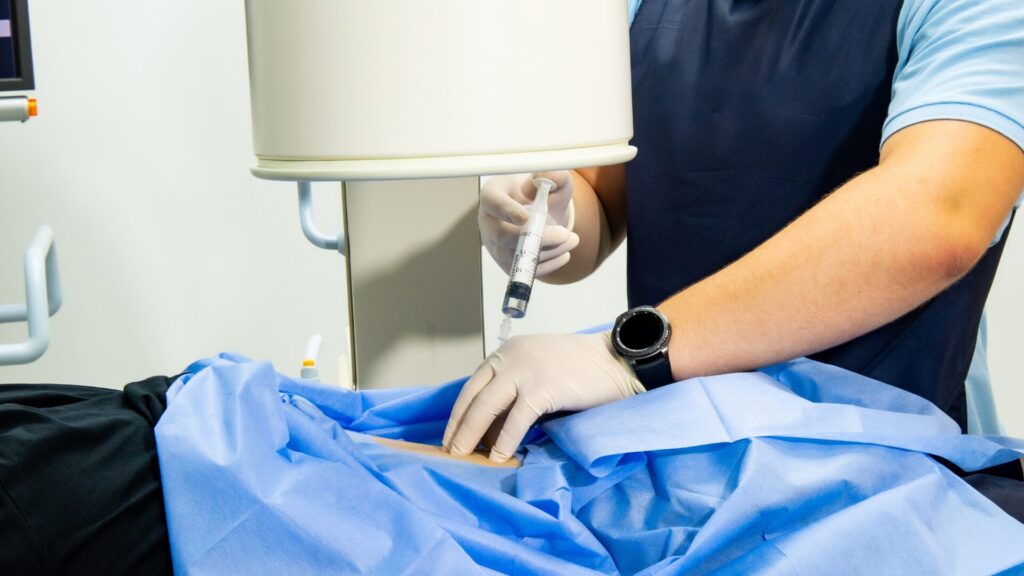All About Percutaneous Spinal Instrumentation
Image sourced from Canva
Percutaneous spinal instrumentation is one of the best back problems solutions. These are devices placed by the surgeon in the spine through minimally invasive procedures to treat spinal stenosis. Superion and X-Stop are examples of percutaneous spinal instrumentation.
What is Spinal Stenosis?
The discs separate vertebrae in your spinal column. Each vertebra has the main body in the front and spinal canal or bony canal in the back. There is a disc better each of these bodies. The spinal canal consists of the spinal cord and the nerves.
Spinal stenosis is a condition characterized by narrowing of the spinal canal. Over time, the foramina or the spinal canal become narrowed or stenotic. This occurs due to the thickening of the ligaments between the laminae. As a result, the facet joints become inflamed and overgrown. This condition is also due to disc bulges and pinched nerves, which are caused by discrete bone spurs.
Causes of Spinal Stenosis
Although there is no evidence why some people develop this condition, narrowing of bony structures and soft tissues can cause spinal stenosis. When the spinal canal undergoes narrowing, the individual develops a condition called “central stenosis.”
The narrowing of foramina leads to a health disorder called foramina stenosis. People above the age of 50 mostly suffer from this condition. Standing or walking can cause increased pressure on these nerves. This leads to pain in the back and leg area.
The common symptoms of spinal stenosis include numbness, pins-and-needles sensations, buttock pain, and leg pain. If you are suffering from this condition, you will have limited mobility and a problem in walking.
Can Percutaneous Spinal Instrumentation Treat Spinal Stenosis?
As mentioned above, percutaneous spinal instrumentation is one of the best back problems solutions, it can treat the problem of spinal stenosis. Surgeons at the Minimally Invasive Neurosurgery of Texas place these devices between the two vertebrae.
The spinous processes are the areas where the surgeon places these devices. These are bones a person feels when he or she presses firmly on the midline of their back. Our surgeons are highly-qualified and experienced who can securely place these devices. Once placed, the devices tend to expand, which increases the space between the spinal canal and foramina. This leads to reduced leg and buttock pain.
Minimally Invasive Surgery to Treat Spinal Stenosis
When it comes to back problem solutions, many people go for open back surgery. This can cause pain and complications. On the other hand, minimally invasive surgery involves making a 1-inch incision in the midline of the patient’s back to treat the spinal stenosis.
Our surgeons carefully perform the dissection to create spaces between the spinous processes. Then, they insert the device between these processes. We use intra-operative X-rays to confirm the appropriate placement of the device.
When the surgeon places the percutaneous spinal instrumentation in the correct position, the devices expand. This leads to opening up the foramen and the spinal canal. The surgery time is approximately 1-2 hours.
The surgery will relieve symptoms like aching, tingling, pain, numbness, weakness, heaviness, and inability to walk.
Is Percutaneous Spinal Instrumentation Effective?
The success rate for minimally invasive surgery using percutaneous spinal instrumentation is around 90 to 95%. The success rate depends on the patient’s specific pathology. However, our surgeons ensure to provide the best back problems solutions and this includes treatment for spinal stenosis.
The first thing a patient will notice a few weeks after the surgery in an improvement in leg pain. The patient will feel better to walk. Surgeons at the Minimally Invasive Neurosurgery of Texas recommend patients to enroll in a physical therapy exercise program to further strengthen their legs.
If the symptoms in your buttock or legs are annoying, you should undergo the minimally invasive surgery at MINSTX. This surgical procedure has been found effective in improving your quality of life and symptoms associated with back problems like spinal stenosis.
The primary benefits of the minimally invasive techniques include less trauma to the back muscles and soft tissues. Another advantage is that of fast recovery time. You will have minimal discomfort or pain following the surgery. It has fewer complications than open back surgery.
The goal of minimally invasive surgery is to create tiny incisions to treat the problem. This leads to minimal scar tissue. The minimally invasive surgery performed at MINSTX has a higher success rate and sustained improvement. This surgery aims to reduce blood loss. In fact, blood loss is minimal.
If you have difficulty walking, feel pain in the legs and buttocks, and quality of life has declined, contact MINSTX today. We will diagnose your problem and in case you have spinal stenosis, our surgeons will perform the minimally invasive surgery involving the placement of Percutaneous Spinal Instrumentation.

